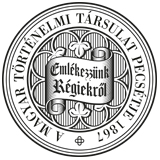Századok – 2024
2024 / 1. szám - TRANSZNACIONÁLIS ÉS GLOBÁLIS FOLYAMATOK A 19-20. SZÁZADI MAGYARORSZÁGON - Simonkay Márton: Vízerőművek és környezetvédő mozgalmak. Adalékok az 1980-as évek osztrák–magyar kapcsolataihoz
SIMONKAY MÁRTON és háttérintézményeik.106 A felsorolt nemzetközi környezetvédelmi szervezetek — Greenpeace, WWF, Friends of Earth — egyike sem nyugat-európai vagy észak-amerikai környezetvédők más területekre kiterjesztett programjainak a része, hanem mindegyikük alapvetően lokális tömegbázisra épül,107 s feltehetően ez a sikerük titka. Az említett nemzetközi (ernyő)szervezetek a globalizáció hatásaként az 1990-es évek óta Magyarországon is stabilan jelen vannak.108 106 Lányi András: Harminc év múlva. Ellensúly 2. (2019) 3. sz. 50. 107 Anton van derHeijden: Globalization, Environmental Movements and International Political Opportunity Structures. Organization & Environment 19. (2006) 1. sz. 38. 108 Például a WWF Magyarország, vagy a Friends of Earth részét képező Magyar Természetvédők Szövetsége. — Susan Rose-Ackerman: The Voluntary Sector and Public Participation: The Case of Hungary. Annals of Public and Cooperative Economics 79. (2008) 613. HYDROPOWER PLANTS AND ENVIRONMENTAL PROTECTION MOVEMENTS Remarks on Austro-Hungarian Relations in the 1980s By Márton Simonkay SUMMARY In the 1980s, the environmental protection movements that had gained strength in the countries of the Western Block in the second half of the 20th century built connections with the environmentalists of the Eastern Block. Such a connection point was the protest against the construction of the planned hydroelectric power plants on the Danube in Hainburg in Austria, Gabcikovo in Czechoslovakia, and Nagymaros in Hungary. The study examines the environmental movements’ pre-history, connections, and survival after the fall of the Communist regimes in the East. 110
